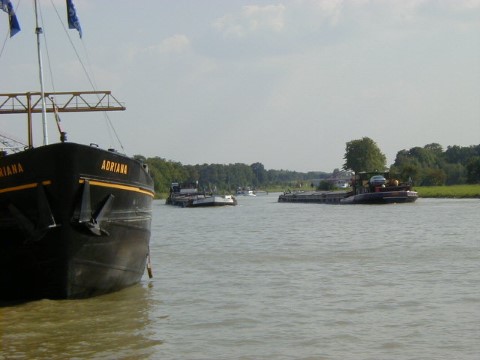The History of the Dortmund-Ems Canal
The History of the Dortmund-Ems Canal The DEK was born out of the actions of the early Münster Bishops who recognised the economic significance of the River Ems and between the 15th and 18th centuries several minor canals were built to create links with Holland.
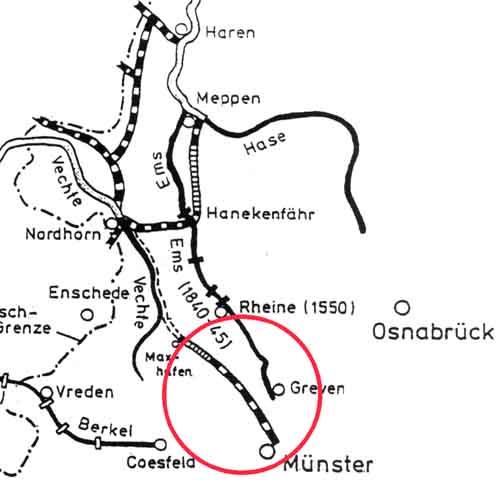
Bishop Clemens had plans drawn up for a canal between Münster and Nordhorn where the River Vechta became navigable. In 1724 work on this canal was begun but, by 1731, had only reached as far as Steinfurt which was less than half the total distance........within the red circle
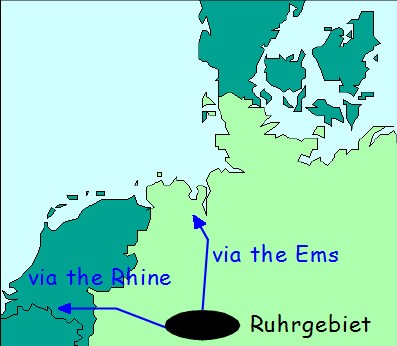
It was later suggested that a more significant plan would be to create a link from the Nordrhein-Wesphalia area through to the North Sea. This link would bypass the mouth of the Rhine which, although in the Netherlands, was controlled by Napoleonic forces who demanded customs taxes for goods in transit. However, following the Rhine Navigation Act of 1831 which allowed freedom of navigation and the exemption of duties levied on the mere act of navigation, the Prussian authorities lost interest in an independent link with the North Sea.
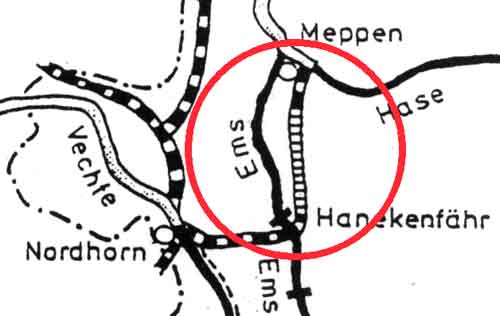
Further improvements to the traffic conditions on the River Ems were undertaken by the Kingdom of Hannover; between 1824 and 1829.
A 25km canal was built which linked an existing canal at Hanekenfähr with Meppen (at which point the Ems becomes navigable).

The building of a railway between Münster and Emden in 1856 caused a crisis as the low cost of the rail freight took away much traffic from the canals. Fortunately for the canals, the development of the Ruhr coal mines and the huge number of associated businesses rekindled interest in moving large quantities of goods and raw materials using water transport.
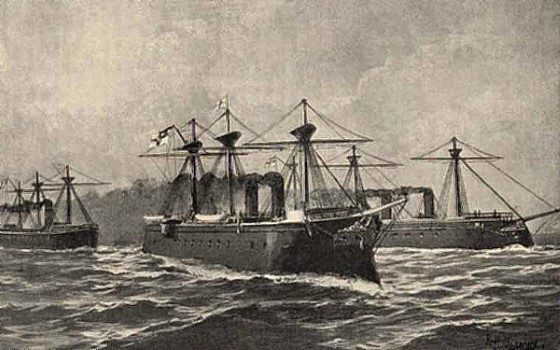
Various proposals were put forward, but an economic crisis focussed the attention of the planners onto one connection........a link from the Ruhrgebiet (Ruhr area) to the North Sea. This route had many advantages: it would extend the markets for Ruhr coal, it would enable the Ruhr mines to be more competitive with the cheap English coal available at the coast, it would supply the war harbour of Wilhelmshaven and it would be an independent link with the North Sea allowing the unimpeded import of Swedish iron ore.
Due to political wrangling and the opposition of other steel producing areas in Germany, the actual building of the Dortmund-Ems Canal did not begin until 1892, a full ten years since the plans were initially promulgated.
The building of the canal from the River Ems to Herne in the Westfalian coal-field took seven years and cost 80 million Marks.
At its peak it employed over 4000 workers including Dutch and Italian specialists (who accounted for about 30% of the total).
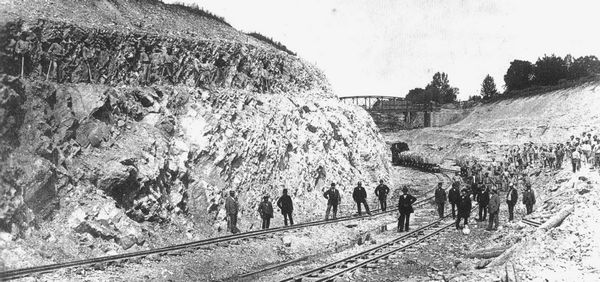
The great majority of local people saw the building of the canal as the chance to escape from the poverty of their everyday life. Many men at this time had only the uncertainty of work that was available on a daily basis.
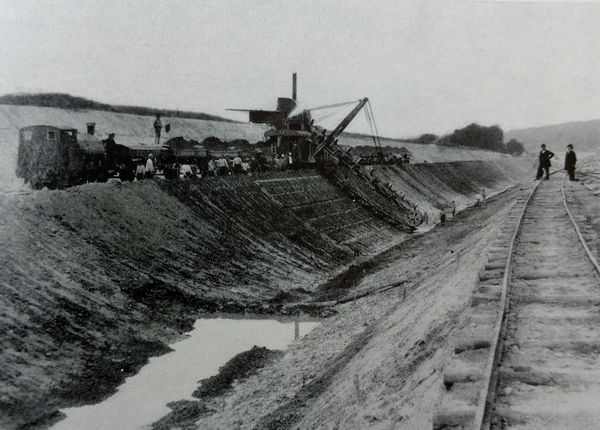
The finished canal was 266km long and involved the removal of 23 million cubic metres of earth/rock to create the channel. The route passed through 19 locks and had 273 culverts for small streams and flood water to pass under the canal.
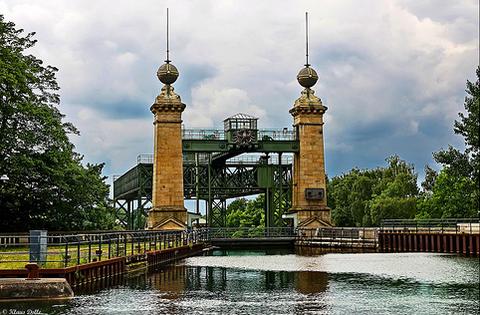
At Henrichenburg the largest engineering project was a shiplift to transfer vessels the 14m height difference from the Herne to the Dortmund branch of the canal.
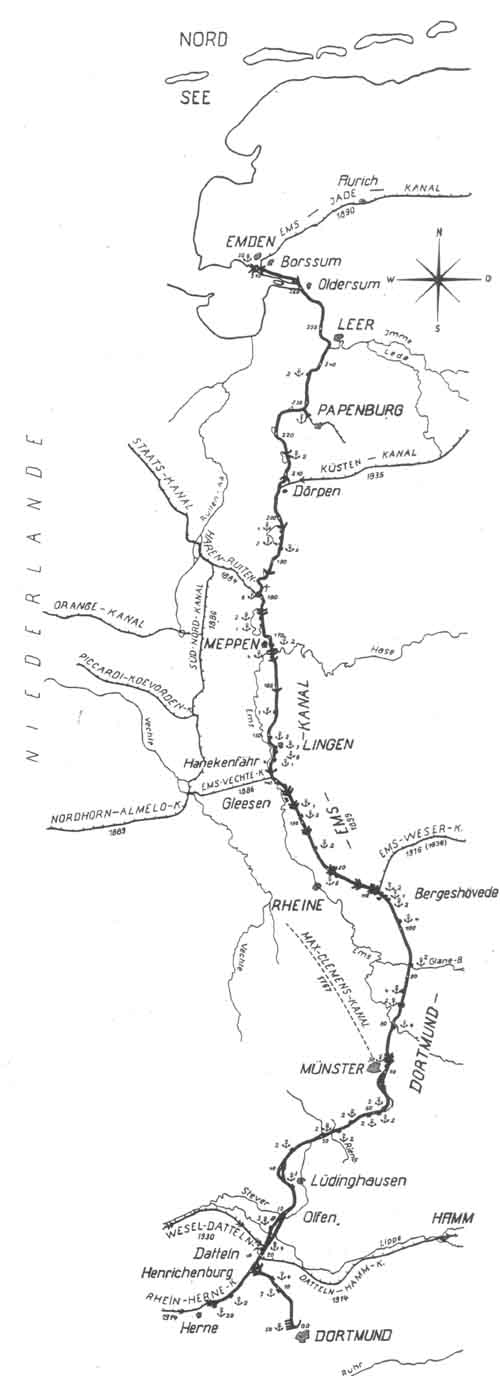
A map showing the full length of the Dortmund-Ems Canal.
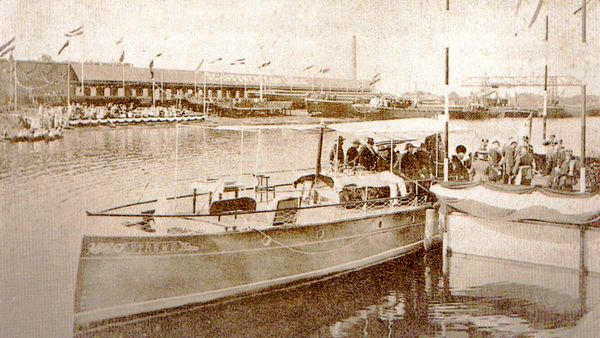
On the 11th August 1899, Kaiser Wilhelm II opened the canal at a ceremony in Dortmund.
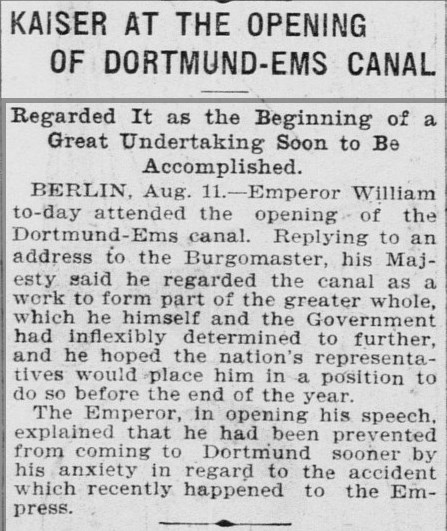
He announced to the crowds that the DEK was to be the first of a series of projects and that he was resolved to build the Mittelland Canal from the Rhine to the River Weser as soon as possible.
The southern part of this project was completed in 1914 when the Rhein-Herne canal linked the DEK directly to the River Rhine.
From 1927 to the present day considerable additional work has been carried out to improve the canal. This has involved removing bottlenecks as well as a general widening and deepening of the waterway in order to allow the use of ships carrying loads of up to 3,500 tons.
The Dortmund Ems Canal busy with barge traffic.
